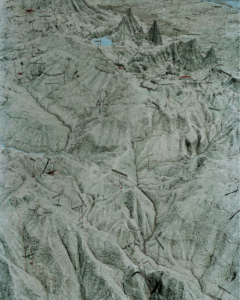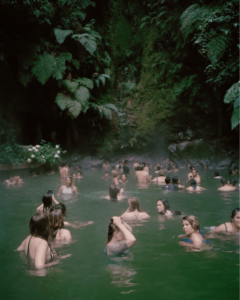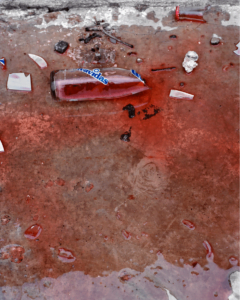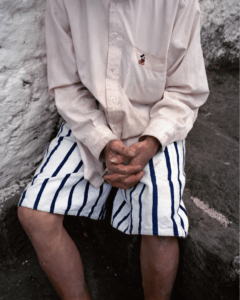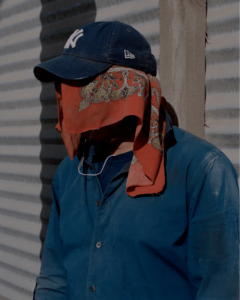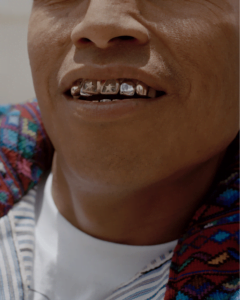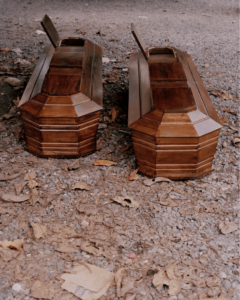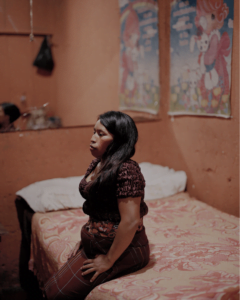It was 1524 when Pedro de Alvarado arrived in Guatemala. Driven by the desire for conquest, he traveled the territory leaving behind him violence and wars that lasted until 1821, the year of the country’s independence. Almost 500 years later, Juan Brenner, a photographer and art director based in Guatemala City, decided to embark on the same journey as the Spanish conquistador. Photos of places and inhabitants thus become the medium through which Brenner portrays a nation in a phase of profound transformation, but at the same time anchored to traditions and customs of the past.
We met Juan to tell us about the project, from how it was born to how it developed, resulting in his first published book: Tonatiuh.
Why did you choose the tilte Tonatiuh for your first book?
Tonatiuh is the nickname the inhabitants of Mexico gave Pedro de Alvarado: his blond hair, pale skin and blue eyes fascinated the natives of the New World. Tonatiuh is the Sun God of the Aztec mythology, there’s a claim that Pre-Columbian people mistook the newly arrived conquistadors for supernatural beings. I’m fascinated with the idea that native morale or will to resist was undermined by awe at the Spaniards’ divine powers.
Can you tell us a little bit about yourself?
I am a self-taught Guatemalan photographer, I started photographing in the late 1990s, mainly street portraits. As a teenager I just wanted to be an artist. Both my parents and my three brothers are professionals and were very successful in school. I just needed to get away from that. I tried to write, draw and even sing. I came across photography by chance, I never thought of it as a means of communicating, but it came at a very critical moment in my life and just opened the doors of a world of creation and destruction that I had never experienced before.
This project is the result of years of research, how did you develop it?
The idea first came to me in 2015, while traveling through Peru and Ecuador. It matured in my mind for almost two years, until I started investigating and doing research. From there everything just snowballed. In the beginning I wanted to work around the topic of indigenous power in Guatemala, but reality hit me very fast after I started talking to indigenous leaders. I understood that power is still controlled by the white man, by the coloniser.
So I went all the way back to the moment I believe was the turning point of our history, and that was the conquest of the Americas by the Spanish Crown. I also had to minimise the geographical coverage of the idea, as trying to do something about the whole continent felt like an impossible task.
I had to read a lot, I didn’t want to pretend to be a historian, but I knew that I needed to be very keen on facts to be taken seriously. Also, talking to historians and anthropologists gave me a more realistic context on how the invasion went down — after that it was just a matter of being able to map Alvarado’s steps and start a journey.
How has the relationship with your homeland changed through this work?
When I was in my early 20s and was defining my conceptual pillars, I swore I was never going to shoot in Guatemala. I really didn’t want to be a part of a “tourist porn” machine and felt that shooting volcanoes, landscapes and smiling indigenous people was the tackiest thing ever. Fast-forward almost 20 years and here I am, finding myself and dealing with my own reality. Life really taught me to accept my Guatemalan-ness with a major slap in the face.
This project was very important on a personal level. I connected with a bunch of realities and ideas I was just putting away and trying to ignore: ideas of origins, heritage and racism were things that didn’t matter as much before.
When you started working on the project, did you already know what it would look like in the end?
It’s really strange. I had so many images in mind, so many situations that I knew I would encounter. And it happened! It was magical. I didn’t have a “planned aesthetic”, which was later defined by the content, and I think it is one of the reasons why the project resonates in so many different niches. I think I was driven by a sort of sense of democracy in the choice of shots. I knew I wanted to create a book, and from a design standpoint I had a structure in mind even before I started taking pictures, for example the colour of the book. I felt in my veins that orange was my way to go, I wanted to talk about the sun and how his figure had played such an important role in the narrative that I was about to start.
One of the main objectives of the Spanish colonisers was to collect gold and, from the photographs of this project, one can perceive how this material still has a significant importance in Guatemala. Have you portrayed hands full of rings, mouths of people of all ages with grills and gold teeth, where do you think this aesthetic comes from?
Gold was the reason why the conquest was so successful, but what happened in Guatemala is that there was no gold. Pedro de Alvarado was so obsessed with the idea of becoming rich and powerful that he didn’t investigate enough to understand that the stories he heard about the riches of this region were about Quetzal feathers and Jade.
Nowadays the Guatemalan highlands are evolving into very powerful and rich communities. Knowing that, I grabbed my camera and ventured into the mountains to shoot all these rich indigenous people wearing fancy gold chains and jewellery – but I didn’t find any of that.
Instead I found people wearing gold on their mouths, everywhere! They get grills done even on the street; but the most amazing thing is that the Mayan royalty embellished their teeth 2000 years ago with bone and jade as a symbol of power; modern Mayan descendants are doing it again with gold, not as homage to their inheritance, but again as a symbol of power.
Your book has already received a lot of attention, such as the inclusion in the Aperture‘s First Photobook Award shortlist. What are your plans for the future?
It has been so crazy! I still can’t believe all the press the book has gotten, so many people were exposed to the project; it’s surreal. I think about all the platforms that featured the project, online and printed publications that talked about it and gave it life, and made it part of a collective unconscious in the contemporary photo world; that for me was the biggest achievement.
I’m actively working on putting Tonatiuh on walls, I feel like the gallery ecosystem is the natural next step for the project. I know 2020 will be of a lot of traveling, putting up shows and talking about the project.
I’m working on three different new project as we speak. I tend to do that: work on many things and suddenly it clicks, I feel it; one of them will become my main thing and I will just blast it.

